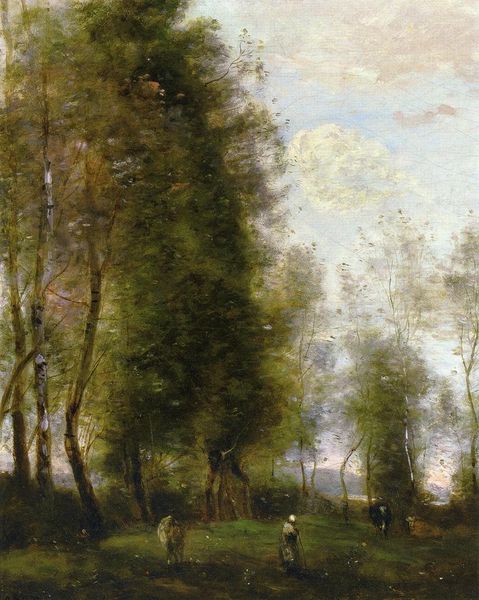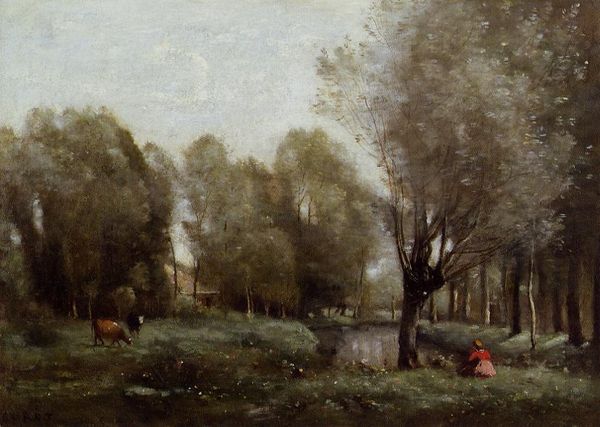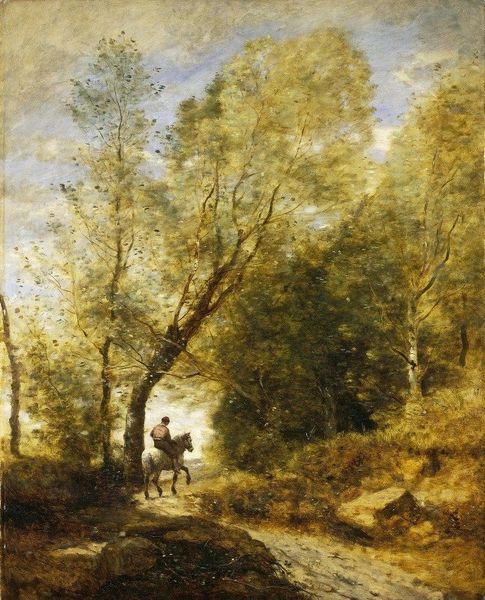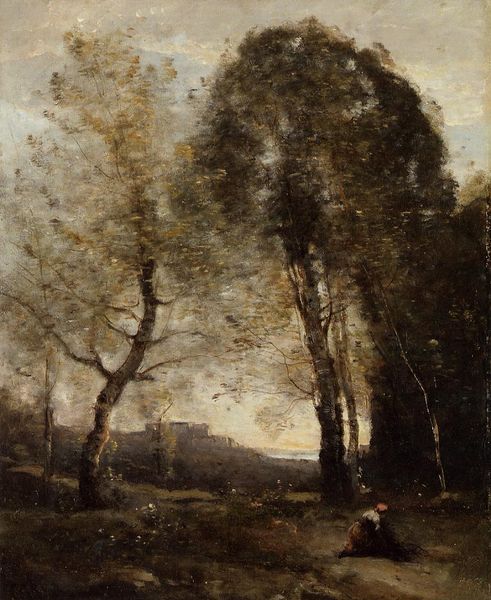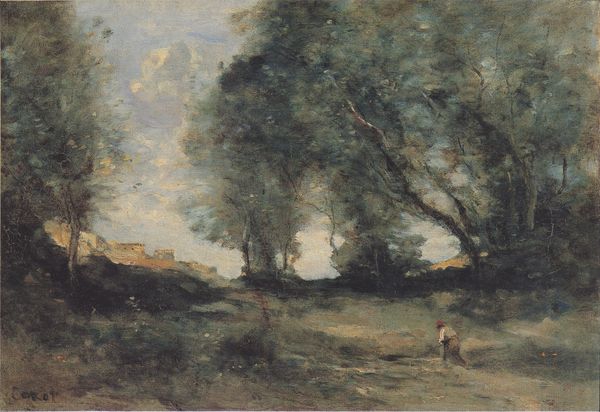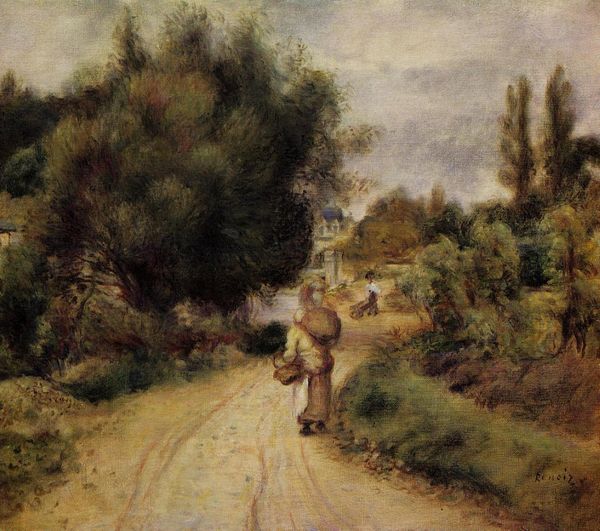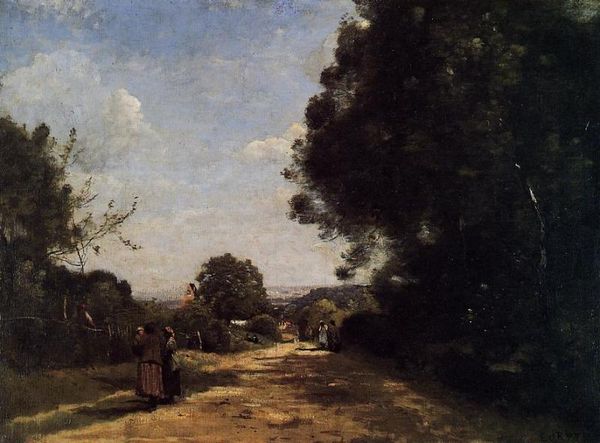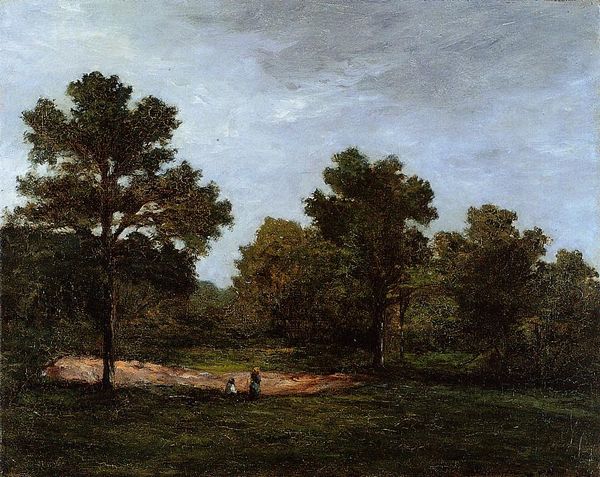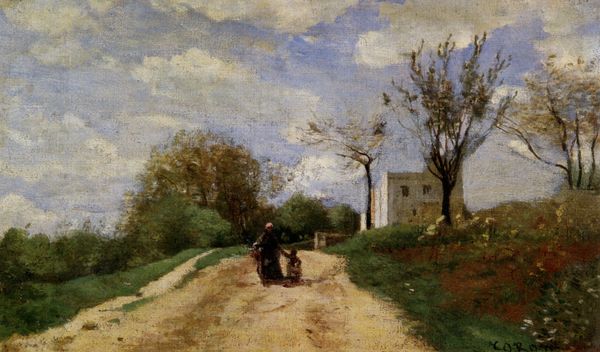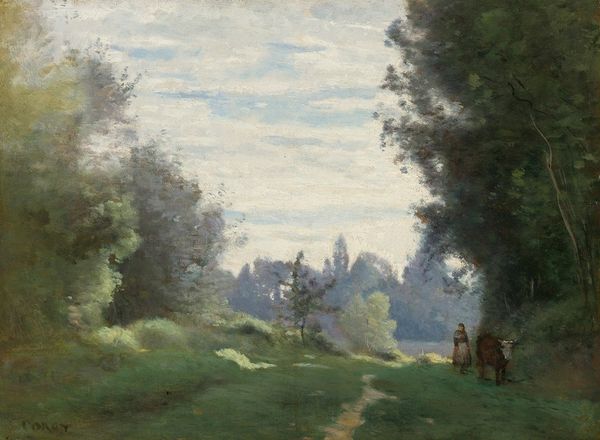
Copyright: Public domain
Camille Corot painted this oil on canvas, called Landscape with Three Figures, sometime in the mid-19th century. It seems, at first glance, to be simply a depiction of rural life. But Corot was working at a time of great social change in France, as industrialization and urbanization were rapidly transforming the country. The image, therefore, creates meaning through visual codes, cultural references, and historical associations. Corot spent a lot of time painting en plein air - that is, outdoors, directly in front of the landscape he was depicting. This was a relatively new practice at the time, made possible by the invention of portable paint tubes. He was part of a generation of artists who were turning away from the grand historical and mythological subjects that had long dominated academic painting, toward more direct and personal engagement with the world around them. To better understand this artwork, we can look at the art criticism of the time, the writings of other artists, and the social and political history of 19th-century France. The meaning of art is always contingent on its social and institutional context.
Comments
No comments
Be the first to comment and join the conversation on the ultimate creative platform.
